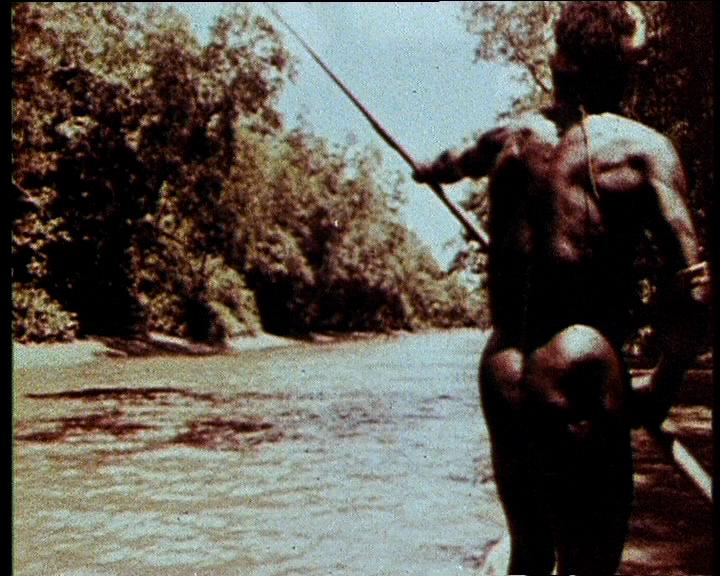

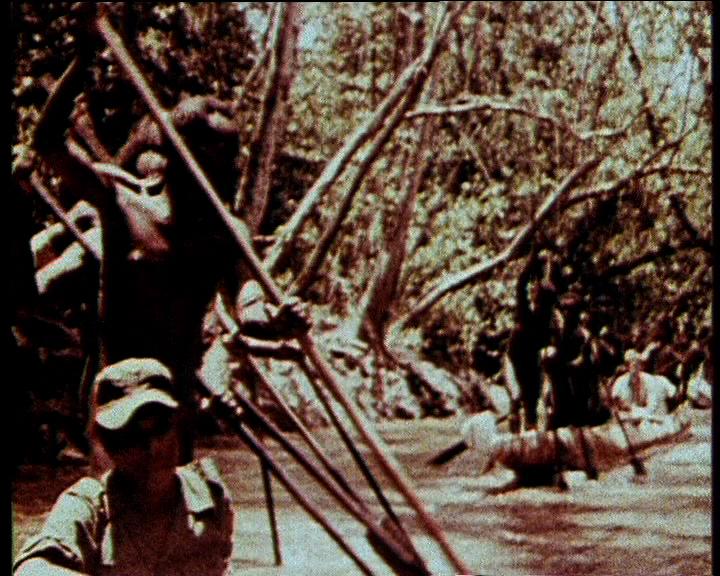

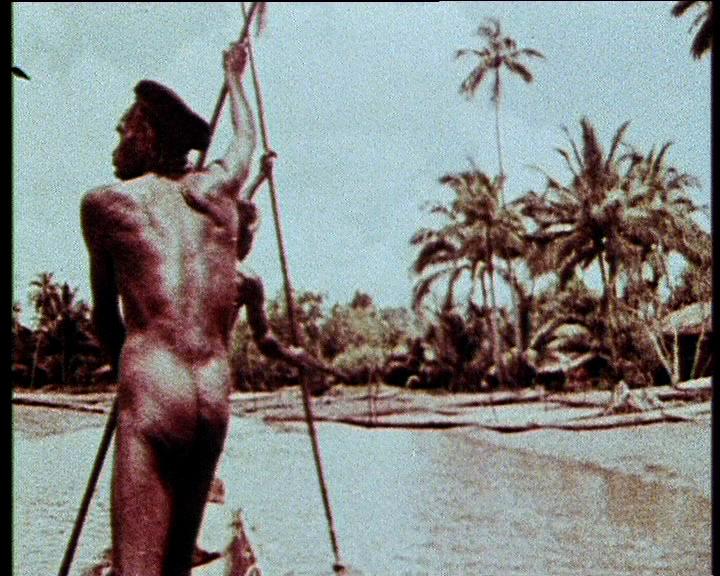

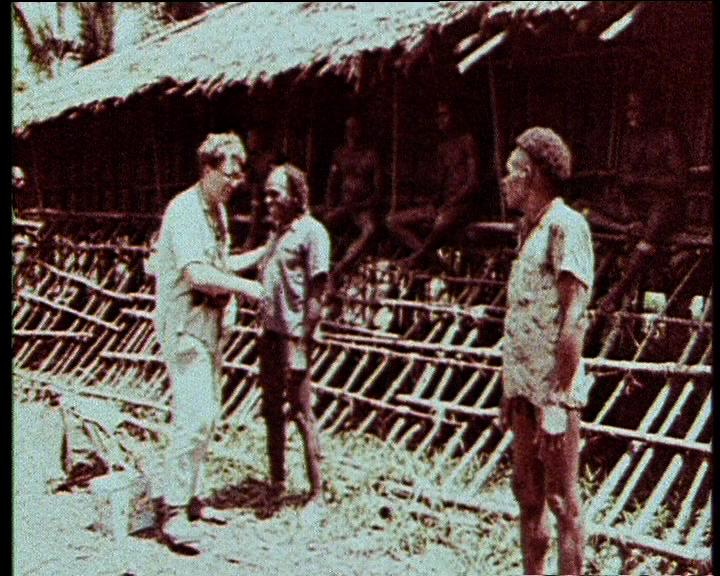

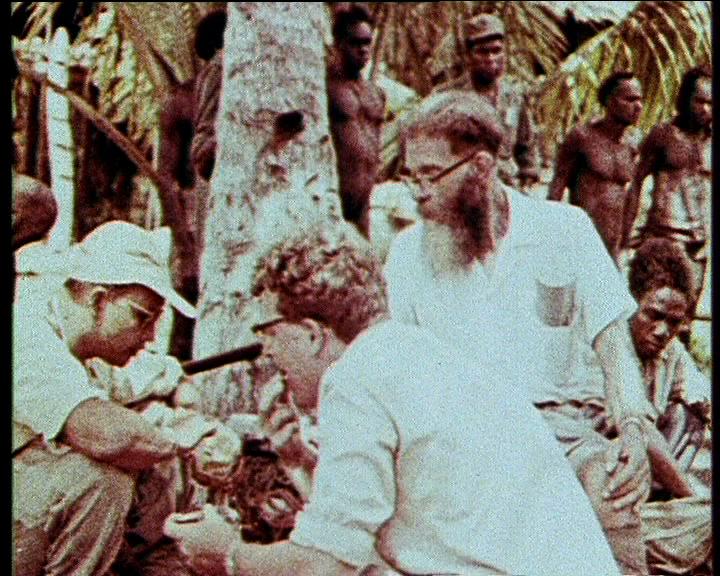



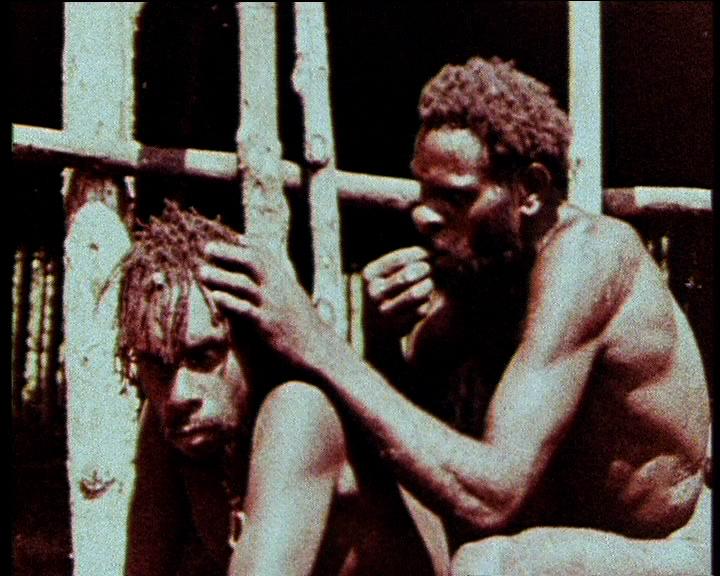

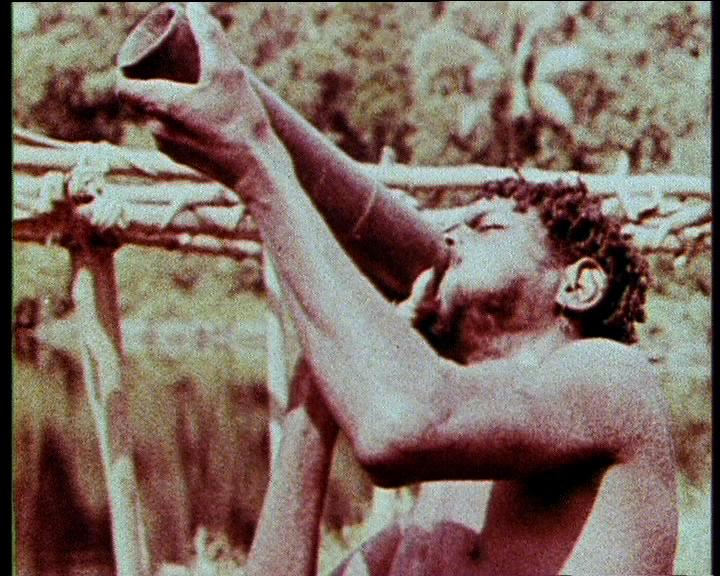

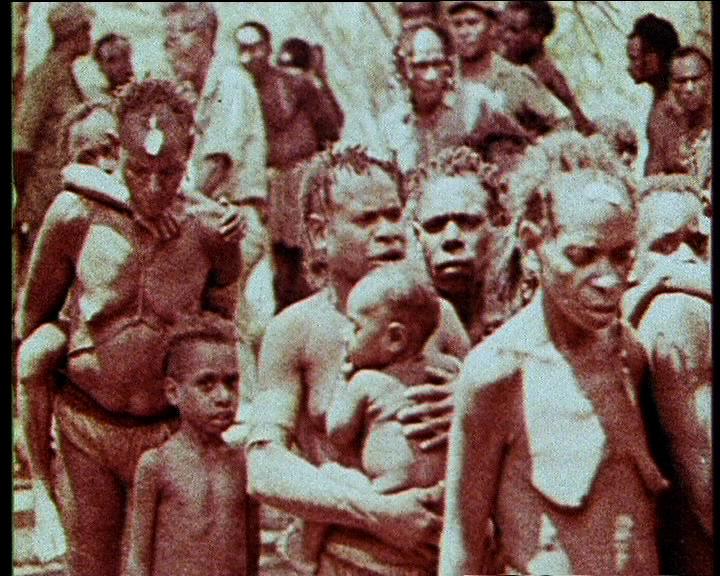



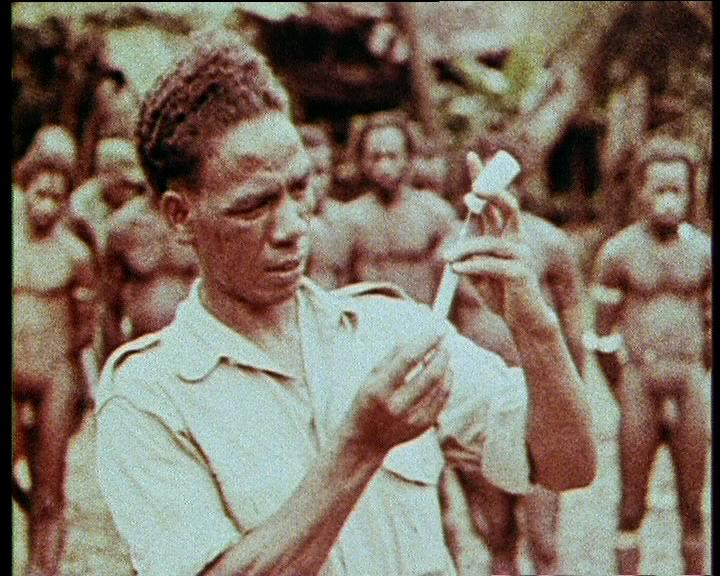

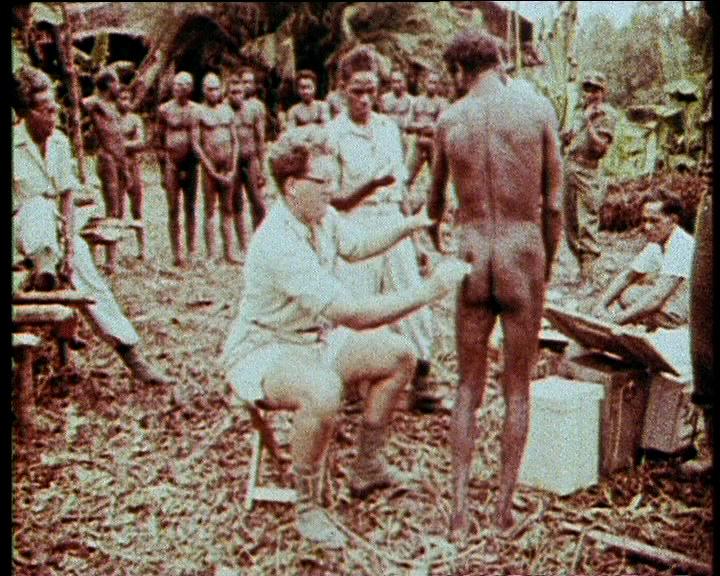

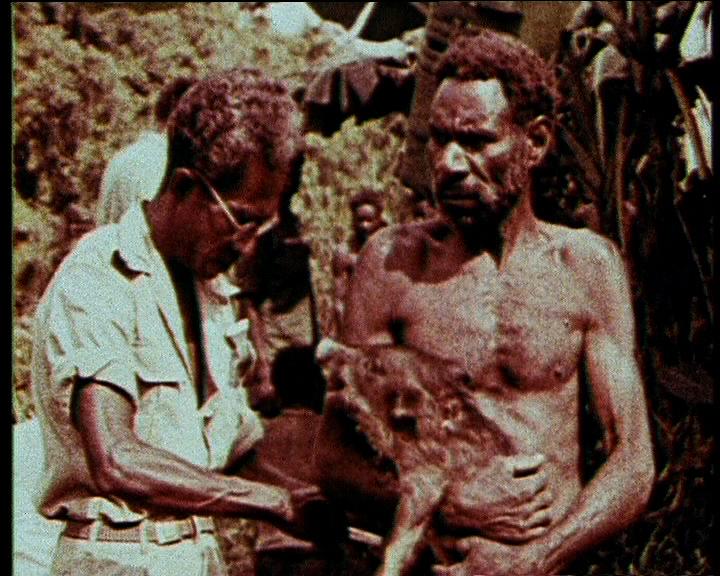

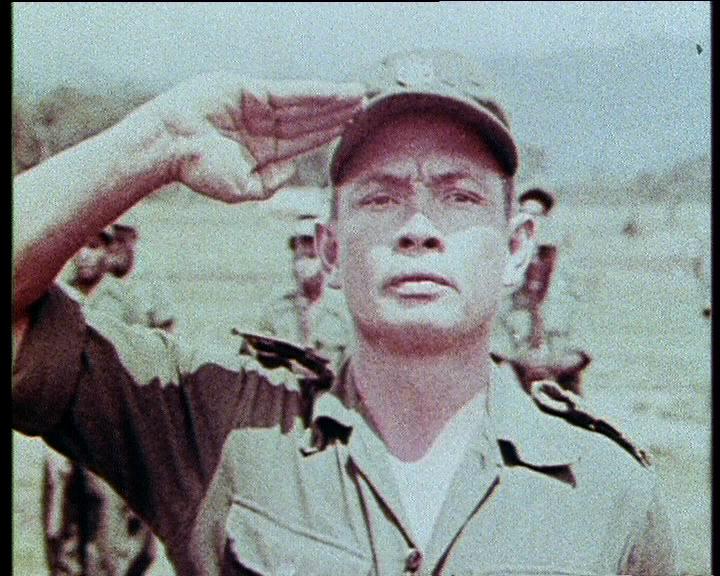

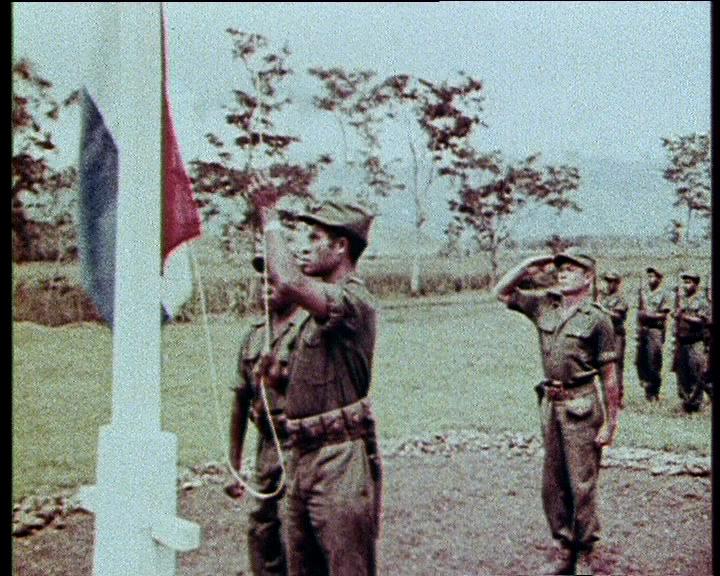

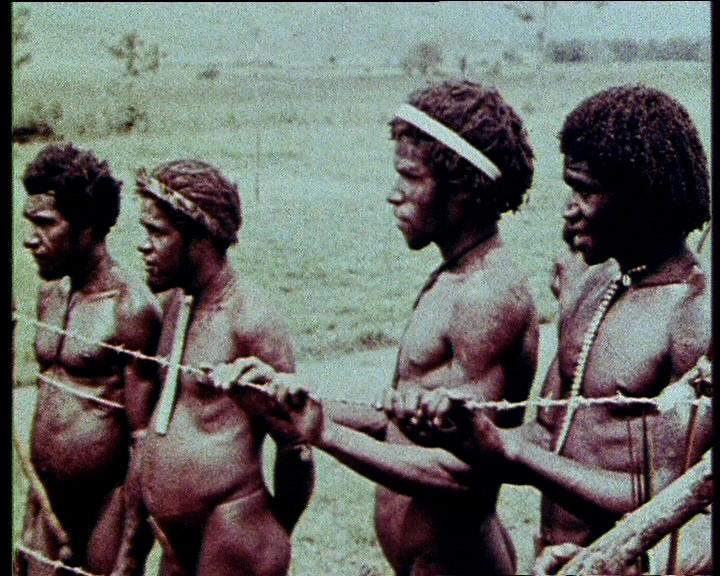

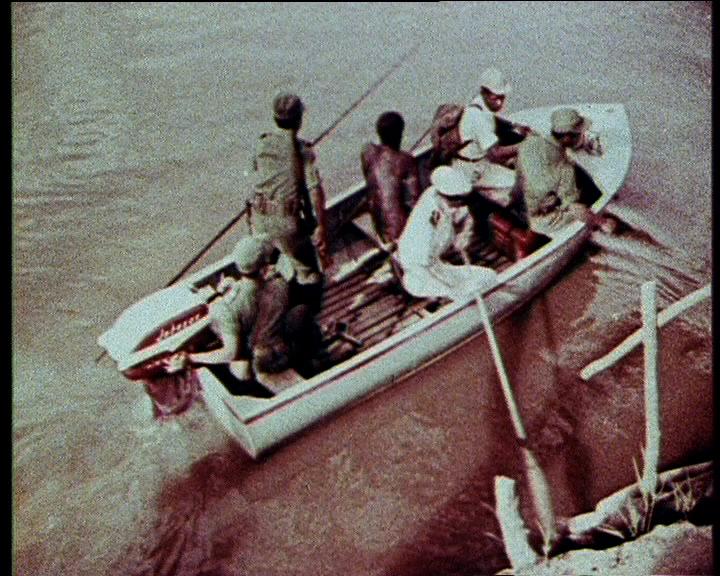

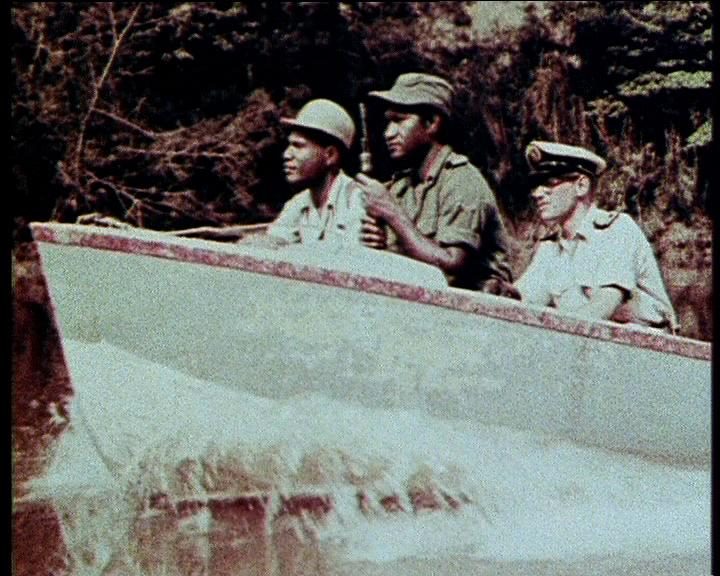

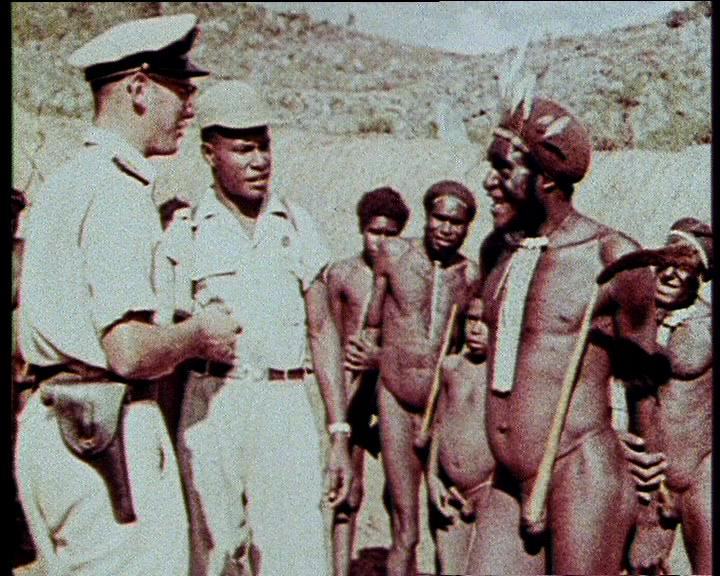

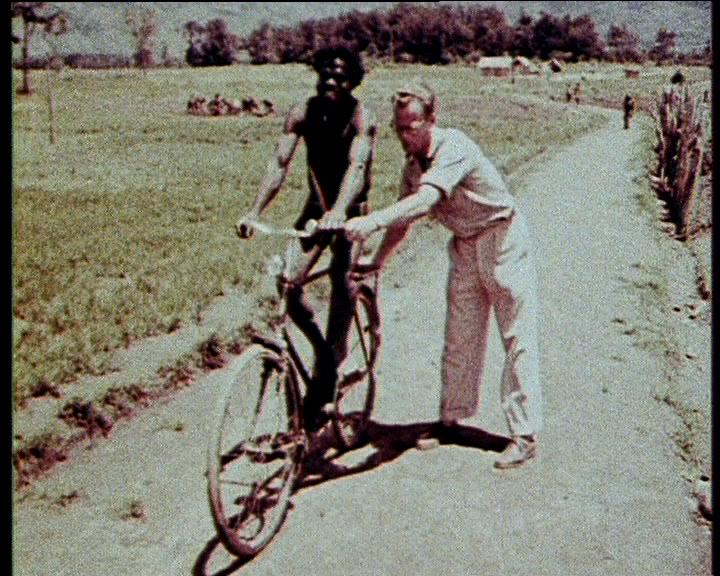

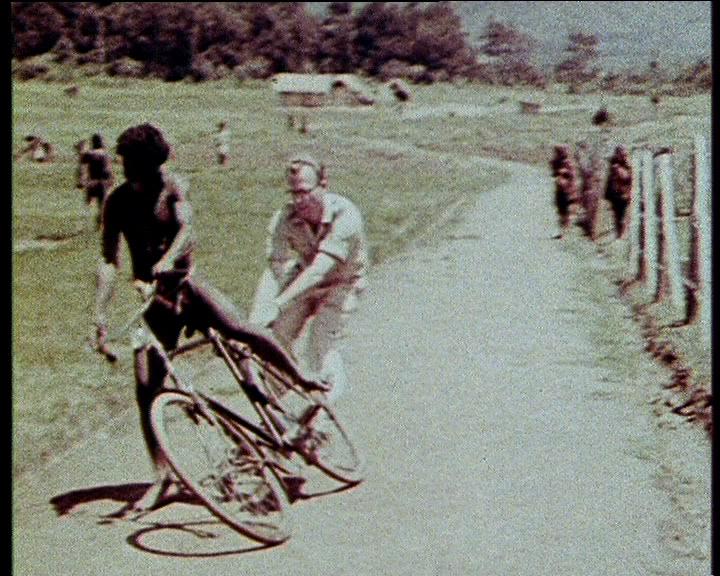

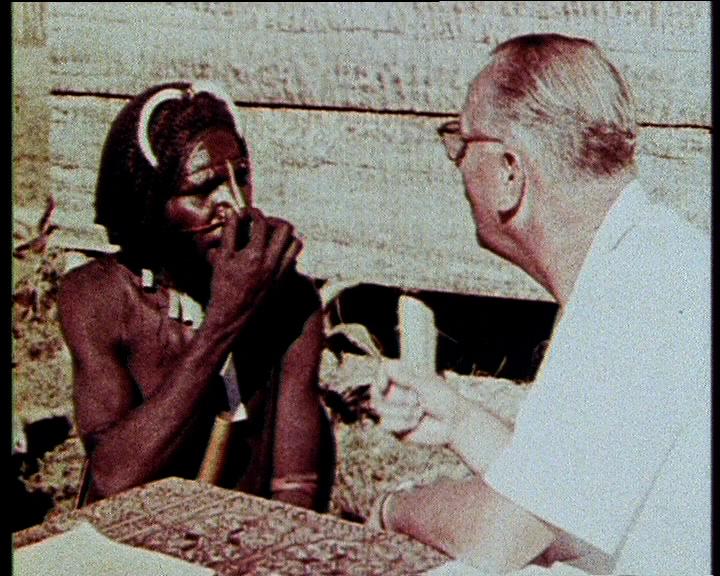

Panorama Nederlands Nieuw-Guinea
Panorama Netherlands New Guinea
Objectcode
FI/1200/48
Compilation of three New Guinea Chronicles: 1. W.M. Visser (District Health Officer) doing a resurvey as part of a yaws campaign. 2. Government patrol in the Baliem Valley. 3. Voting for the New Guinea Council
Contents
1. New Guinea Chronicle 12: Information film for Dutch cinema audiences concerning life in Netherlands New Guinea. The film shows a medical expedition, led by the District Health Officer, W.M. Visser, entering the jungle on the Casuarine Coast by prau to vaccinate Papuan tribes against yaws. Father C. Meuwese MSC also takes part in the expedition. The Papuans visited have not yet been brought under gouvernment control, but they succeed in winning the confidence of the locals and the whole village is vaccinated with penicillin. The film contains some shots of local daily life. 2. New Guinea Chronicle 15: District Officer (DO) of the Civil Administration in uniform and his team go on board a motorboat, sailing a broad river, passing Papua.s on a raft and finally heading for the shore. 06.29 Village on the slope the team are climbing. 06.48 Long huts, covered with palm leaves, built next to each other on a mountain plateau. 06.51 Officer shakes hands with the big man and talks to him via an interpreter. 06.59 Papua nurse inspects the soles of a patient.s feet, disinfects the left buttock, gives a hypodermic and puts a plaster on the left lower leg. 07.18 Officer seated with the back against a hut between big men talking about local affairs. 07.29 A piglet is killed. spark are blown to fire in a handful of straw and a wood fire is made. 07.43 The killed piglets are held above the fire to singe the hairs off. Then the skin is scratched clean with the fingers and cut open with a bamboo knife. 08.00 Bunches of leaves are brought for the steam bundle and large stones are deposited in the fire. The leaves are spread in an shallow hole. Heated stones are put on with forked poles or liana carriers. Sweet potatoes are placed on the stones and on top of them come alternating layers of leaves, stones and vegetables. The meat is put on last. The bundle is sprinkled with water and covered with large leaves that are bent and lashed up. 08.49 The medicine man announces the reason for the feast. 08.57 The officer and the big men sit close to the steam bundle waiting for the food to be ready. 09.05 The officer thanks the big men for their hospitality by giving one a big shell and the other a hunting knife. For everyone else he gives a roll of indigenous tobacco. 09.22 The officer sitting between the big men, eating. 09.30 Close up of two women with carrying nets are greeted by two missionaries and the son of one of them with the .knuckle greeting.. 09.45 The missionaries visit a local in his hut and explain to him they want to buy wood by indicating his axe and a tree trunk. 10.09 Papuans cut a thin tree at breast height and chop it up in usable pieces. 10.25 Chopping up a piece of wood. Two sticks are placed in the cloven wedge and bend back to increase tension on the wood and make it easier to split. 10.41 Missionaries pay the price agreed on in shells. 10.52 Missionaries go on, with the son on his father.s shoulders. They meet a villager and the boy is lifted on his shoulders. They all go down to a pair of huts. 11.21 A long straight path leading to the missionary post. The younger missionary teaches a Papuan how to cycle. 11.46 The older missionary has an older and younger Papuan say a word in their language. Young coastal Papuans that are educated to become teachers are listening. 3. New Guinea Chronicle 21: The New Guinea Council Building. A placard with the composition of the Council in Indonesian and a poster announcing the coming elections with a strip over it calling people to vote. Election posters, placards and banners. 03.40 Fruit displayed along the road. Lady pays saleswoman. Small .pasar (market) with girl under a .pajong (umbrella). 03.55 Woman with a sandwich-board promoting candidate Mori. From the other side comes a crowd with banners supporting Mr. De Rijke. 04.12 Sign asking to vote for Mr. De Rijke and another asking to vote for Mr. Mori at polling station 6. Arriving voters. 04.29 From the veranda the chairman of the polling station receives the voting convocations from the voters. Has the names checked by two clerks, gives the voters a ballot-paper with which they enter a polling booth with curtain 04.45 List of election candidates fixed onto curtain. 05.07 Woman voter leaves polling booth putting her ballot-paper in the wooden ballot-box 05.17 The chairman directs in a friendly way the people to the polling booth. A European lady puts her paper in the ballot-box, followed by a native, a European, a Papuan woman and a massive Dutch lady. 05.45 The seal on the ballot boxes lock is being cut and given to the chairman of the election board. Clerk opens the ballot box and puts the ballot-papers on the table in front of the chairman. The whole of the Papua audience is looking on. (source: www.beeldengeluid.nl)
Title
Nieuw-Guinea Kroniek
Year
1958
Technical detail
Film type
Information film
Color
Spoken comment
Multiple languages
Thesaurus terms
Cultural
Cultural origin » Papua
Geographic
Geographical term » Papua » Division South New-Guinea » Subdivision Mappi
Geographical term » Papua » Division Hollandia » Explorationressort Eastern Highlands » Baliem
Geographical term » Papua » Division Hollandia » Subdivision Hollandia » Hollandia
Geographical term » Papua » Division South New-Guinea » Subdivision Asmat » Casuarine Coast
References
Bibliographic reference
van Amelsvoort, V.F.P.M., Early intrduction of integrated rural health into a primitive society. 1964. pp. 80,81
Links
http://www.beeldengeluid.nl